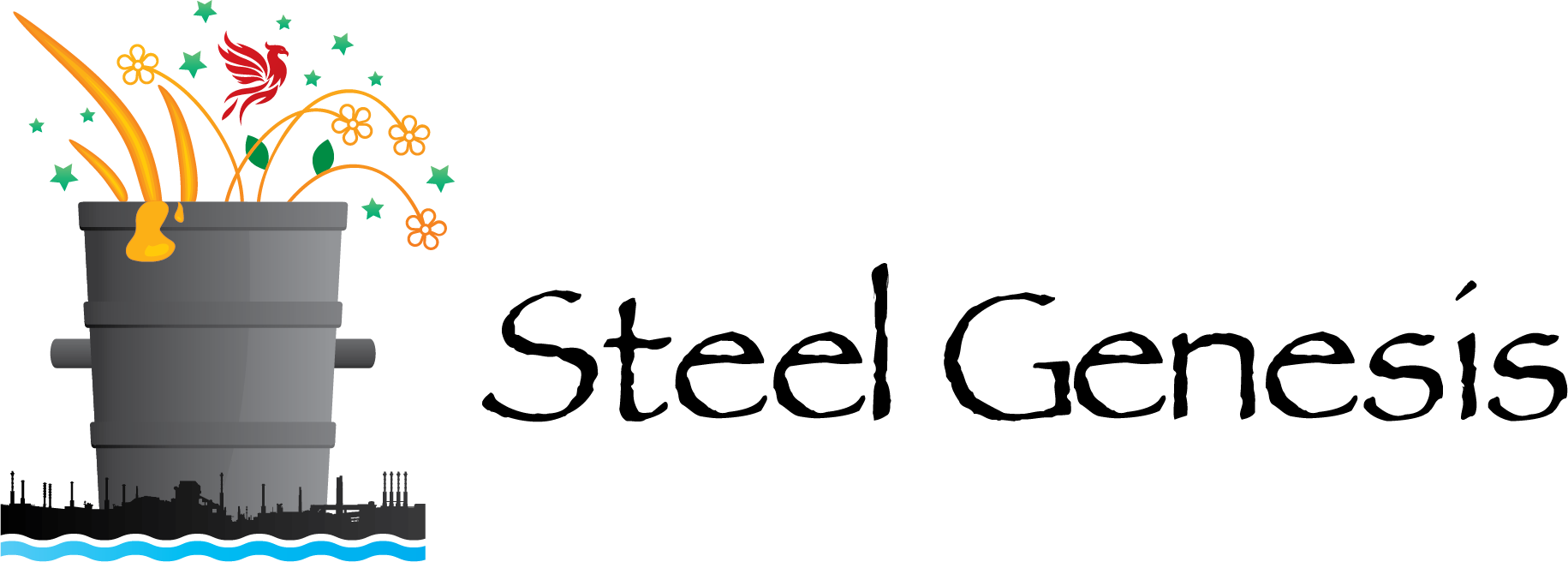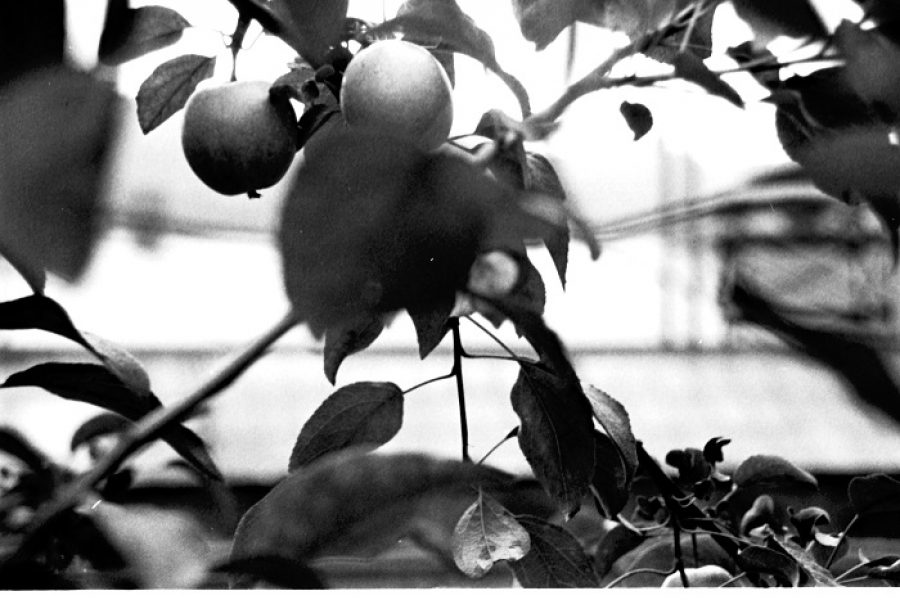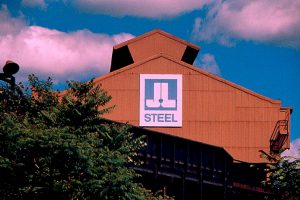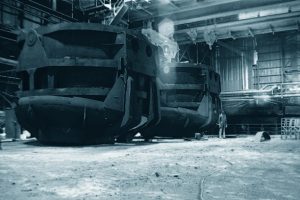Cloudless blue covers meadowland, the river and hills. Southward from Hazelwood Avenue’s railroad tracks, the land slopes down to the Monongahela River. When I gaze west, I marvel that the behemoth coke oven batteries, the fuming by products plant, the coal handling facility with its tug boats and barges, the world of coke and iron is gone. A mix of majesty and mourning fills my awareness that a vast, green plain buries a world that was once gray and gargantuan. A wish forms.
In 1884, one dollar bought as much as $24 purchases today. That year, the first long-distance phone call connected Boston and New York, the Statue of Liberty was presented to the United States, and Jones & Laughlin Steel Corporation opened its first industrial plant on the 168 acres between Second Avenue and the Monongahela River.
Before the Civil War, hazel woods shaded those grasses. Those twenty-foot bushes produced filberts or hazelnuts. The tree was believed to protect humans from snakes and was sacred to the Celts and Druids. Hazelnuts were considered a source of wisdom. The Greeks wove hazel branches into headpieces to protect warriors from evil. And the Irish believed hazelnut beverages improved prophetic powers. On January 27, 1901, The Pittsburgh Leader reported,
Districts that 15 or 20 years ago were beautiful with handsome homes, splendid lawns and fine old shade trees, are now mere ghosts of their former selves, sad pictures of decay and neglect. The former occupants have moved away to avoid the unpleasant associations which smoke or grime or the plebian air that inroads of the wage-earners’ class have given the neighborhood. Such is the fate of Hazelwood, which 30 years ago was perhaps the choicest suburban section around Pittsburg.
Coke began replacing charcoal in steelmaking by the time railroads supplanted the pack horse, Conestoga wagon and canal boat and when Hazelwood’s genteel class abandoned the “multitude of great, noble trees that threw their protecting boughs over the stately, hospitable homes.”
The coking ovens burn away coal’s hydrogen, methane, nitrogen, carbon monoxide, carbon dioxide, ethane, propane, tar vapors, naphthalene vapor, ammonia gas, hydrogen sulfide gas and hydrogen cyanide gas, leaving carbonized coal, a fuel that generates intense heat and very little smoke. Coke also removes oxygen from iron ore, converting it to metal.
In 1910, the Boy Scouts of America was founded. Earth passed through Comet Halley’s tail. Forty-eight thousand beehive coke ovens blistered Pittsburgh’s skies, with the world’s largest collection blazing beside Jones & Laughlin’s Hazelwood blast furnaces. One year later, the U. S. Immigration Commission reported, “The smoke and gas from some ovens destroy all vegetation around the small mining communities.” In time, J&L built the By Products plant to improve profits and satisfy emission regulations, to convert raw coke oven gas to fuel and otherwise cool the coke oven gases, to remove tar aerosols and ammonia and recover benzene, toluene and xylene and to treat the waste water generated during the coke making process.
In 1961, General and President Eisenhower left office warning against the accumulation of power by the “military-industrial complex,” John F. Kennedy was inaugurated President and Hazelwood had four, coke oven batteries, totaling 295 ovens. Each one was a 40-foot-long chamber, 13 feet high and just 15 inches wide on the pusher side (where coal entered) and 18 inches wide on the coke side. An oven held seventeen net tons of coal and, after burning off impurities, pushed out twelve blazing tons of coke. Minimum coking time per oven was 17 hours, with a mix of 18% low volatile coal and 82% high volatile coal.
By Products’ five tar extractors could handle 1,000 cubic feet (MCF) per hour. The three gas exhausters could handle 88,000 cubic feet per day. Each of the two ammonia stills processed 12,000 gallons per hour. One ammonia liquor tank held 20,000 gallons. The other a half million gallons. Six tanks held 20,000 gallons of acid each. Two tar tanks held the same amounts. The other pair held 600,000 gallons of tar apiece.
When I visited that facility, guys talked about how the sizzling coke had to be cooled or “quenched” so that it could be loaded onto railroad cars. Otherwise, the coke would continue to burn because it held heat. One said, “When water hit the coke, huge funnels of steam were released and, as the steam gushed up into the sky, a light sprinkling of rain fell as some of the steam condensed.” When I drove along East Carson Street near Becks Run Road, I saw those columns foaming skyward, enormous and as lathery as shaving cream.
By Products employee Kenneth Randall said that he came to the mill from the Duquesne Brewery. His first work was in the warehouse where they processed steel for customers. Randall then transferred to Hazelwood’s Ingot Mould Foundry. He said, “It was one big room. They had piles of sand and you had ovens in the middle and a place down below where you would use the sand to cast the moulds. You had to shovel a lot of sand, and then tamp it together and then put blacking on it to hold the sand together while you baked it. Then you set it down and poured hot iron into it.”
Another man added, “In the Ingot Mould Foundry, you wore long underwear, but the dust and sand penetrated, and when you went in the shower, you had that dust and dirt on your body underneath it. I asked a guy, I said, ‘Well what did the old timers do? Did they ever NOT have showers here?’ He said, ‘Yeah. They used to go home like this.’”
Ray Topper recalled, “The first girl came into the mill during the war.”
Oscar Jernstrom added, “The company got straightened out on the bathroom facilities when women came in. They had to have separate facilities in the mill. When it was all men, you just went wherever there was water running. When women came in, things changed.”
They spoke of the “regulated” areas in the By Products Department, places so saturated with carcinogens that employees could not take their mill clothes home. Those same employees boasted about the By Products peaches and how big they were.
I never asked if anyone ate the peaches that grew nearer the river than to the methane and carbon monoxide and hydrogen cyanide-saturated air around the coke ovens and by products plant. And I don’t doubt that some attempted a peach recipe like the one my mother tried once.
When I was eleven, my family moved into a narrow house with pear and apple, cherry and plum and peach trees in the yards. The peach trees remain most memorable because they were favorites of the Eastern Ten Caterpillars that plagued us that first spring. My father worked in the evenings when the furry crawlers returned to their nests. So my mother went out into the twilight, burning the gauzy white nests with flaming torches.
My mother’s sisters enjoyed playing Pokeno, dancing, eating and drinking at our home. When they realized that our peach trees were generous, they suggested that my mother make brandy. I’ve researched and found that the home-made brew involved a five-gallon stoneware crock and a few gallons of boiled water poured over very ripe peaches. When everything cooled, yeast was added. A week later, my mother added sugar and other seasonings and left the concoction in a dark closet. In time, we gathered as she raised the cover. Inside, we found an acrid, moldy swamp. I’m sure that the coke ovens and by products guys were more successful.
Peaches contain the potassium that helps regulate heart rate and blood pressure, fluoride for healthy bones and teeth as well as iron, required for red blood cell formation. The Vitamin C in peaches helps the body resist germs. The flavonoid poly phenolic antioxidants in peaches scavenge harmful free radicals.
The fruit originated in China; then traveled to India and Western Asia. Alexander the Great introduced the peach to Europe. Spaniards brought them to the Americas. Peaches are a late summer, velvet-skinned fruit. They grow from stones that nestle into soil in the autumn and germinate in the spring. Peach trees require warm to hot summers and mild winters to thrive. How they colonized Hazelwood’s coke ovens is as lost to history as when and how the trees disappeared.
I’m satisfied in knowing that peach seeds once anchored themselves in the coke ovens’ withering environment and had the audacity to send out roots that claimed sustenance. Amidst toxic and brutal conditions, peaches grew and delivered sweetness, beauty and healing. As earth once rich with hazel woods became smokestack industry and is now meadow … as that land advances toward its next identity, I hope the great spirit and noble energy of the hazel and peach trees continue.
Photo (c) Sandra Gould Ford
Image: Peaches growing by Hazelwood Coke Ovens










